
Conservation Techniques for Cultural Properties
Encyclopedia
In 1975 the Japanese government added a new chapter to the Law for the Protection of Cultural Properties (1950) to provide for 'traditional techniques or craftsmanship that are indispensable to the preservation of cultural property and for which preservation measures shall be taken'. Preservation techniques are selected in relation to both tangible
and intangible
cultural properties and a holder or preservation body is recognized for each technique.
In support of the , the government provides funding for and conducts programmes relating to documentation, training, development, promotion and public education. Recognition is thus made and measures taken to combat some of the most serious conservation issues, namely the lack of specialist craftsmen, the loss of knowledge of traditional techniques, and the availability of suitable tools and materials. These issues are of particular relevance in Japan due to the sophistication and inherent susceptibility of much of its art and architecture.
Tangible Cultural Properties of Japan
as defined by the Japanese government's Law for the Protection of Cultural Properties are Cultural PropertiesIn this article, capitals indicate an official designation as opposed to a simple definition, e.g "Cultural Properties" as opposed to "cultural properties"...
and intangible
Intangible Cultural Properties of Japan
, as defined by the Japanese government's Law for the Protection of Cultural Properties , are Cultural PropertiesIn this article, capitals indicate an official designation as opposed to a simple definition, e.g "Cultural Properties" as opposed to "cultural properties". of high historical or...
cultural properties and a holder or preservation body is recognized for each technique.
In support of the , the government provides funding for and conducts programmes relating to documentation, training, development, promotion and public education. Recognition is thus made and measures taken to combat some of the most serious conservation issues, namely the lack of specialist craftsmen, the loss of knowledge of traditional techniques, and the availability of suitable tools and materials. These issues are of particular relevance in Japan due to the sophistication and inherent susceptibility of much of its art and architecture.
Tangible Cultural Properties
| Name | Remarks | Holder | Year | Picture |
|---|---|---|---|---|
| Individual | 1988 |  |
||
| lit. 'measuring with a carpenter's square' | Individual | 1993 | ||
| In particular for projecting eaves; developed since the twelfth century | Individual | 1991 | ||
| Individual | 2002 | |||
| Gold-embossed wallpaper, used in western-style buildings of the Meiji Meiji period The , also known as the Meiji era, is a Japanese era which extended from September 1868 through July 1912. This period represents the first half of the Empire of Japan.- Meiji Restoration and the emperor :... to Shōwa Showa period The , or Shōwa era, is the period of Japanese history corresponding to the reign of the Shōwa Emperor, Hirohito, from December 25, 1926 through January 7, 1989.The Shōwa period was longer than the reign of any previous Japanese emperor... periods; cf. kinkarakawa or 'leather wallpaper' |
Individual | 2005 | ||
| Includes shōji Shoji In traditional Japanese architecture, a shōji is a door, window or room divider consisting of translucent paper over a frame of wood which holds together a lattice of wood or bamboo... , fusuma Fusuma In Japanese architecture, fusuma are vertical rectangular panels which can slide from side to side to redefine spaces within a room, or act as doors. They typically measure about wide by tall, the same size as a tatami mat, and are two or three centimeters thick... , amado Amado Amado may refer to:*In Japanese 雨戸 , a kind of a door used as a shelter against the rain.-Name:*Amado Crowley , Occult teacher and self proclaimed illegitimate son of Aleister Crowley-Surname:* Carlos H... |
Individual | 1999 |  |
|
| Individual | 1999 | 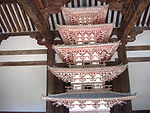 |
||
| Individual | 1998 | |||
| Individual | 2001 | |||
| Glue, brine, clay, and thread are mixed into the lime | Individual | 1998 | ||
| Individual | 1994 | 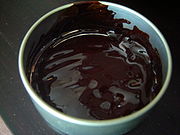 |
||
| Includes mikoshi Mikoshi A is a divine palanquin . Shinto followers believe that it serves as the vehicle to transport a deity in Japan while moving between main shrine and temporary shrine during a festival or when moving to a new shrine... , zushi |
Individual | 1977 | ||
| Individual | 1929 |  |
||
| Individual | 2005 | |||
| Individual | 1998 | |||
| Individual | 1999 | |||
| Individual | 1999 | |||
| Individual | 1980 | |||
| For kakemono Kakemono A , more commonly referred to as a , is a Japanese scroll painting or calligraphy mounted usually with silk fabric edges on a flexible backing, so that it can be rolled for storage.... etc. |
Individual | 2007 | ||
| Individual | 1958 | |||
| Individual | 1978 | |||
| Individual | 2009 | |||
| Individual | 2007 | |||
| Individual | 1998 | |||
| Individual | 1995 | 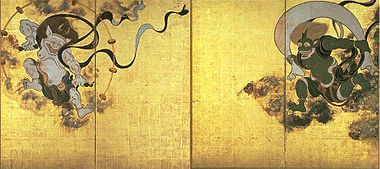 |
||
| Individual | 1996 | 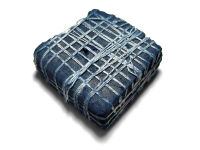 |
||
| Individual | 1997 | |||
| Individual | 1999 |  |
||
| Individual | 1998 | |||
| Individual/Group | 1994 | |||
| Individual/Group | 1980 | |||
| Individual/Group | 1976 | 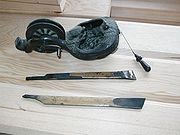 |
||
| Individual/Group | 1976 | |||
| Group | 1979 | |||
| Group | 1976 | |||
| Group | 2007 | |||
| Group | 2002 | |||
| Group | 2002 | |||
| Group | 1995 | |||
| Group | 1978 | |||
| Group | 2009 | |||
| Group | 2002 |  |
||
| Group | 1976 |

